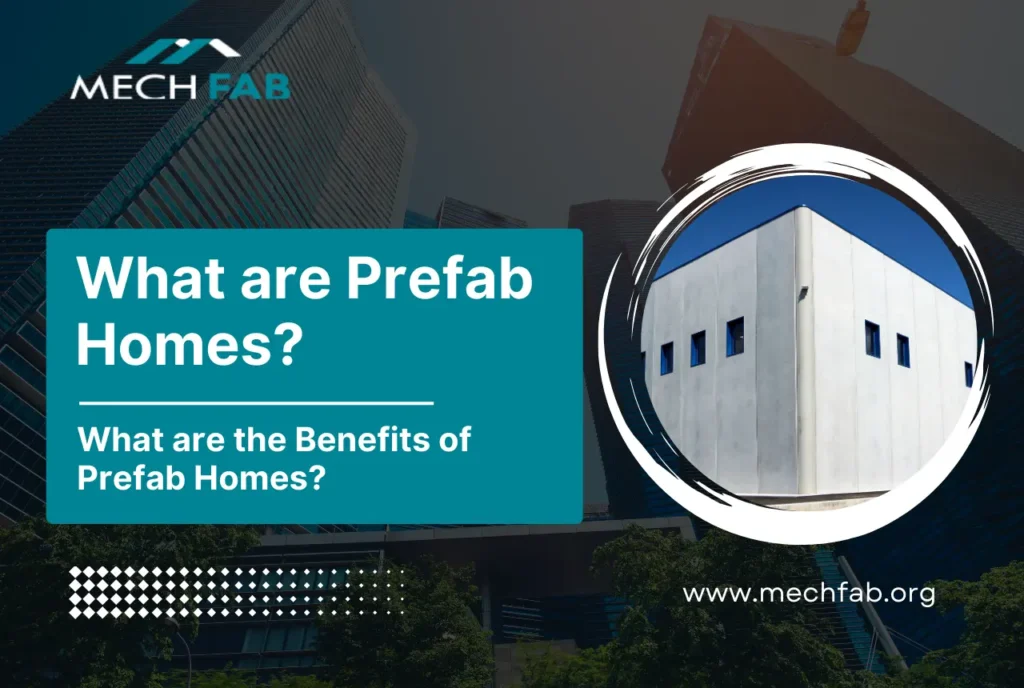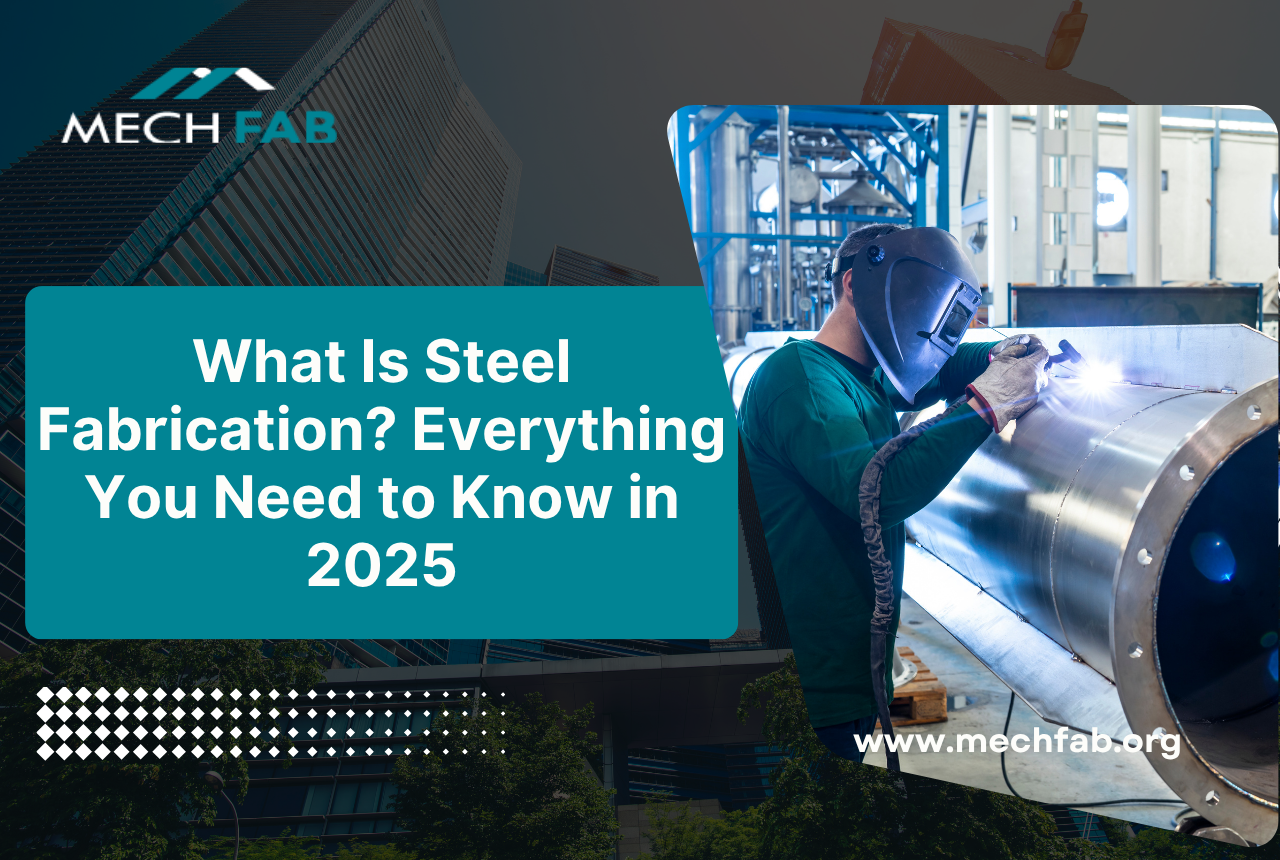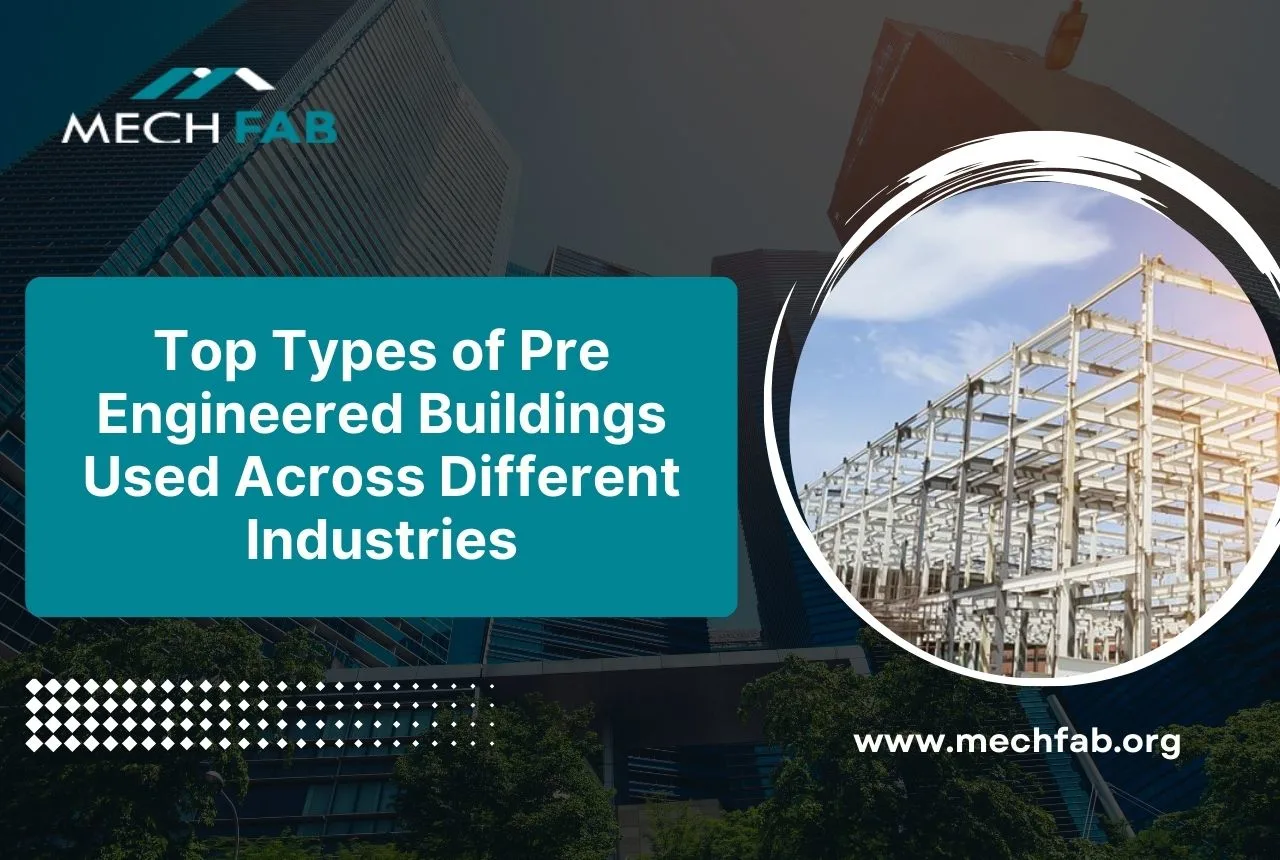Let’s take a deeper look at prefabricated homes, which are the latest game-changers in the construction industry. You might be wondering, what exactly does it mean to have a prefab home? Imagine living in a home that is created off-site, is contemporary, and can be assembled in a matter of minutes; this would be a dream come true.
Because they are inexpensive, environmentally friendly, and simple to construct, these revolutionary homes have gained a lot of favor in recent years.
More and more people are looking for flexibility in homeownership, and prefab homes fill that need. You can design a space that really feels like yours.
Prefabricated houses are what we will be discussing in this article, including the many different types that exist and some of the incredible advantages they offer.
We’ll also introduce you with Mechfab, the top manufacturer of prefabricated steel structures in Assam and the Northeast, where quality and innovation come together.
What Are Prefab Homes?
Prefab houses means prefabricated houses, which are built using parts manufactured inside the factory and then assembled at the site. Prefabrication saves on man-hours in construction in that the different parts are fabricated in a controlled environment which greatly accelerates efficiency. The three prime classes of prefab houses – modular homes, panelized homes, and manufactured homes.
Modular homes are prefabricated in sections and assembled on-site, so they are highly customizable. Panelized homes are prefabricated from pre-cut wall panels; they assemble like a jigsaw puzzle. Manufactured homes are simply another term for mobile homes. They are built entirely in factories and moved to their destination.
Prefab homes have many advantages: reduction in on-site time, waste minimization, and quality assurance because of oversight in the factories involved in the process. This is what modern housing should be. People are no longer interested in just anything but the innovative, efficient, and satisfying building practice that solves the many needs of the modern homeowner.
How Do Prefab Homes Work?
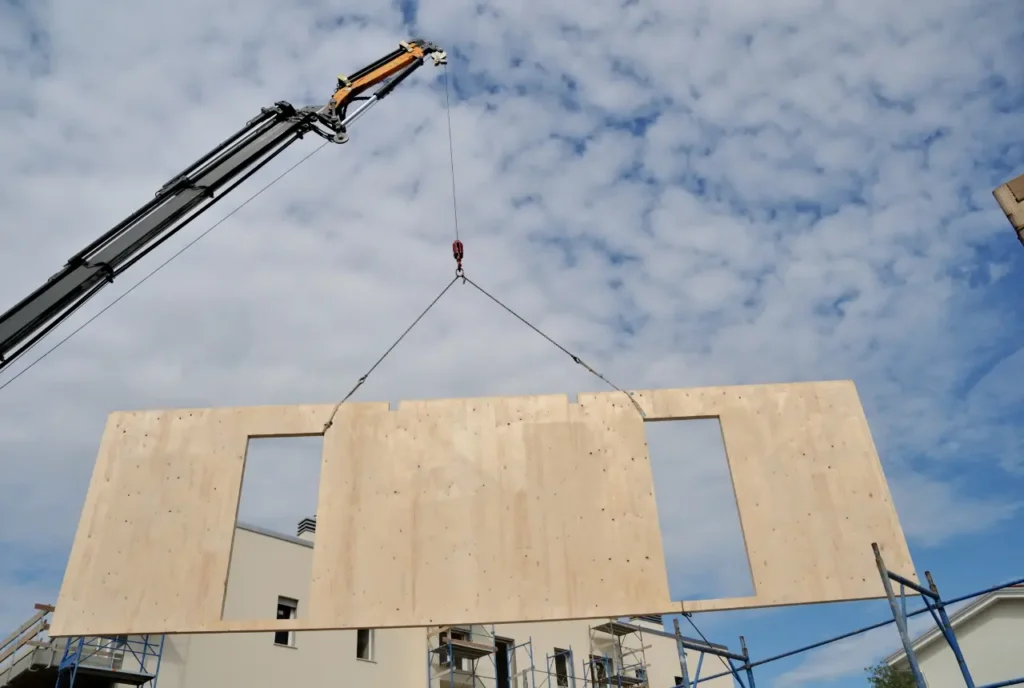
Prefabricated homes are prefabricated homes developed by a structured process, from design up to an on-site assembly. To begin with, homeowners discuss with architects to develop customized designs suited for their needs. Upon the completion of the design, construction is then carried out to a factory setting wherein several parts of the house are produced such as walls, floors, roofs, and even plumbing and electrical integrated systems. The environment of the factory produces quality and reduces waste material.
Once the modules are finished, they are packed tightly and moved to the site with heavy trucks. On-site preparation includes laying a foundation and connecting utilities. The modules then are assembled quickly using cranes or other equipment.
This can be said to be an aspect that most people often misuse by assuming that prefab houses are of low quality and are only for short time uses. However, in fact, prefab houses are designed based on high-quality standards that make them long-term applicable. Most prefab homes also have durable materials as well as advanced construction techniques suitable for all kinds of climatic conditions. More than that, there are thousands of options that allow owners to personalize their home about layout, finishes, or any architectural style.
10 Benefits of Prefab Homes
Prefabricated houses have many advantages that explain why they are increasingly favored by homebuyers. In terms of cost, environmental-friendliness, flexibility, and efficiency, these houses can quite comfortably meet modern living demands. Some of the key points that describe the popularity of prefabricated homes in the housing market are referred to below:
1. Cost-Effective
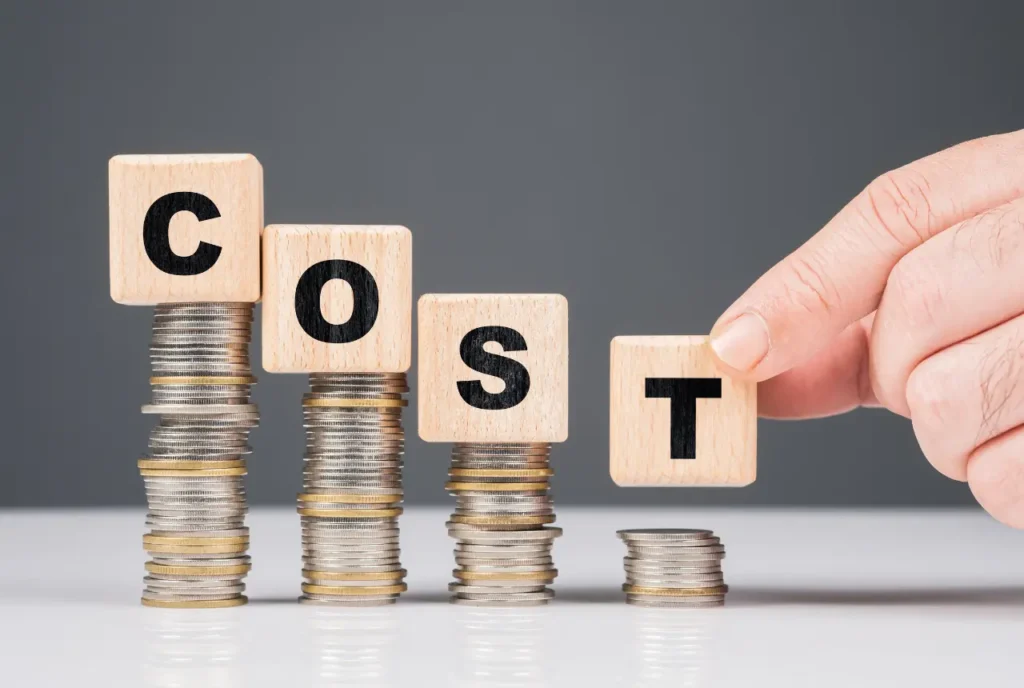
Construction cost of prefab homes is comparatively less than that of any normal construction process. The economy of scale in manufacturing results in cost savings due to the bulk procurement of the materials. Moreover, much labor is performed within the factory environment, which is more controlled, and hence reduces construction costs. For most customers, prefabricated homes are going to offer more value for money. This will result in them being very viable for price-sensitive customers.
2. Faster Construction Time
Perhaps one of the greatest advantages of the prefab homes is the very fast pace of building completion compared to other forms of housing construction. In this sense, most components are assembled inside the factory during site preparation. Thus, project duration for this form of housing significantly becomes shorter.
As these modules arrive at the intended location, it does not take too long to finish putting everything together; homeowners also move in much faster when their house is prefabricated compared to having built traditionally. It is truly time and hassle saving but will save on some displacement while under construction.
3. Eco-Friendly and Sustainable

Prefab homes are also environment-friendly, making them the best choice for the concerned environmental homebuyers. Factory-based construction creates relatively less waste compared to the conventional building methods. Most of the materials used in the prefab designs include high-quality insulation and energy-saving appliances, which makes them more environmentally friendly while also saving money on utility bills in the long term.
4. High-Quality Construction
Prefabricated houses enjoy rigorous quality control measures implemented at the factory site. This means they can reach accuracy and uniformity all through the building process. Components are produced according to strict standards and are handled by trained employees using high technology and equipment for perfection.
There are constant inspections at various points in production, which ensures that defects are corrected before modules leave the factory to be taken to the site. This controlled environment minimises the risks of errors, which so often accompany traditional on-site construction and therefore delivers a solidly constructed home that meets or exceeds industry building standards.
5. Customization Options

Perhaps the biggest draw in pre-fab homes is the huge choice offered to owners. In every level of their home-from their floor plans to their finish-buyers can modify what they want. There is a wide array of manufacturers offering different designs, material, and layout so owners can make their homes have a personal touch of character.
This flexibility allows for each of the prefab homes to be individually designed according to its occupant’s needs and wants, thus making an investment a highly individualized affair.
6. Reduced Labor Costs
The controlled factory environment used in prefab home building would reduce the need to hire on-site labor so that all labor costs become lower. Companies tend to keep manufacturing centralized when they can engage skilled staff who specialize in certain processes, thus resulting in higher efficiency and higher productivity.
This method eliminates delays caused by weather, as well as other site-related disturbances, from affecting normal building timelines. The residence is thus affordable for various customers without compromising on the quality, hence becoming affordable for many buyers in their economies.
7. Durability and Strength

Prefabricated homes are made with strength against most kind of weather conditions. Thus, these prefabricated houses are found to be the most suitable house for Assam and other northeast states where massive rain falls and gusting winds seem to be common.
It is because they are structured using proper quality material with advanced building techniques such as SIPs, thereby considerably increasing the resistance of homes toward these stresses. Strongness – their frames well reinforced for holding stresses up till transportation to installation as well.
Moreover, the quality of prefab construction ensures a low possibility of structural failure, so not only is it long-lasting but can also be an efficient source of shelter from severe environmental factors.
8. Energy Efficiency
The houses are prefab, with incorporated energy efficiency, consisting of multiple advanced technologies and building designs that utilize reduced amounts of energy. Many of them have good-quality insulations, energy-saving windows, and tight building designs so that the heat inside persists during winter and remains cool inside during summer.
Typically, they make use of alternative forms of green energy: sunlight via solar panels, and appliances that use significantly less energy. This attribute contributes to having very low utility bills with a lowered carbon footprint, making prefab homes an eco-friendly choice among homeowners looking to minimize their energy use.
9. Flexibility in Location
One of the major advantages of prefabricated homes is adaptability in location. It is possible to construct different settings, including remote and challenging terrains, because the traditional building methods there may be impractical.
Prefab components are prepared off-site and transported into a location for assembly because they can be set up in locations that lack accessibility to conventional construction resources. This adaptability means prefab homes are an ideal choice for people who might want to build unique locations or hard-to-reach areas while still enjoying well-constructed residences.
10. Reduced Environmental Impact
Prefabricated houses have a reduced environmental footprint as they minimize the time needed to construct and the generation of waste. Materials in a controlled factory environment are used more efficiently without creating waste, ensuring that none is wasted and all resources used to the best of their abilities.
This is very precise, reducing waste generated during the building process compared to traditional construction, where excess materials find their way into landfills. Also, because prefab houses can be built quicker, they cause less disturbance to the environment and produce fewer fumes than extended construction processes. Altogether, these are all elements of a more environmentally friendly home-building process.
Why Choose Mechfab for Prefab Steel Buildings in Assam and Northeast?
Mechfab, located in Assam and Northeast India, is a pioneer company in the prefabricated steel building industry in quality and excellence. Experienced with years, Mechfab caters specifically to both residential and commercial prefab solutions ensuring a high degree of durability as well as excellent design quality of each project.
Through cutting-edge manufacturing processes that focus on precision and uniformity, along with extended custom options to suit requirements, Mechfab caters to the building needs of each client.
It has successfully completed many projects scattered across the region without issues, bringing happy testimony from its satisfied customers. For instance, in matters of detail, as exhibited by clients during and post-construction, their concern was transparent communication of events or progress during construction time, and thus the effort delivered results, making them come back for more when deciding to invest in prefabricated steel buildings, the topnotch quality of the type, Assam or elsewhere within the Northeast.
Conclusion
Prefabricated houses are great, with a lot of benefits, including cost savings, fast construction time, eco-friendliness, good quality, and utmost customization. All these facts make them appealing options to prospective buyers who seek efficient yet sustainable living spaces. In the context of Assam or Northeast India, give Mechfab a call on your new project; it may meet your various requirements of excellent quality and satisfaction in prefab steel buildings.

